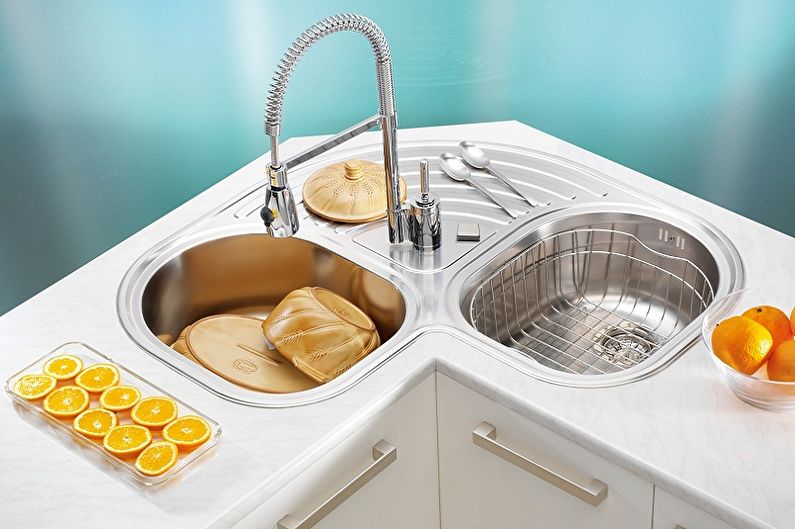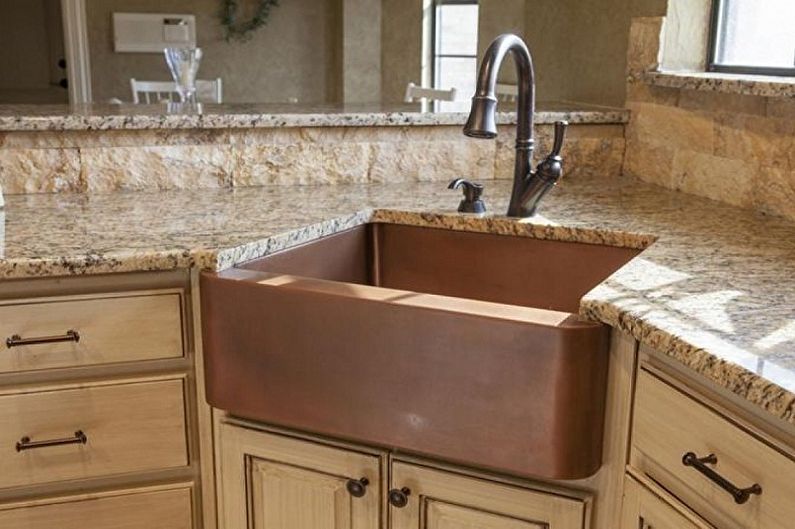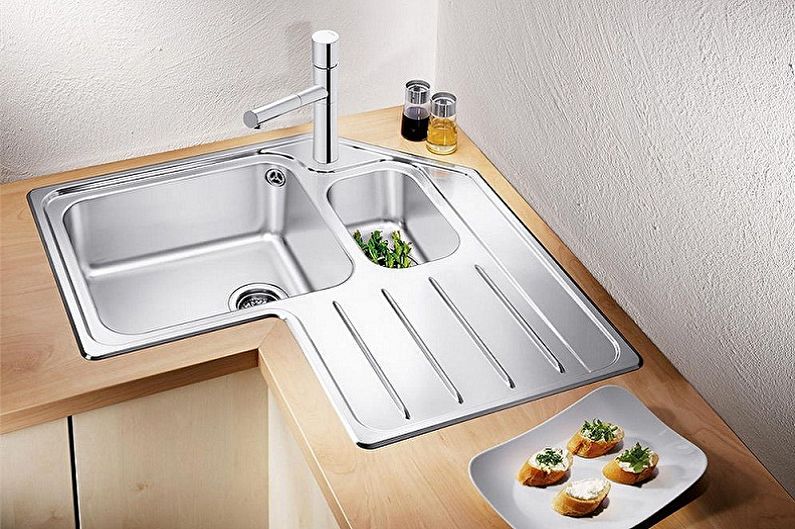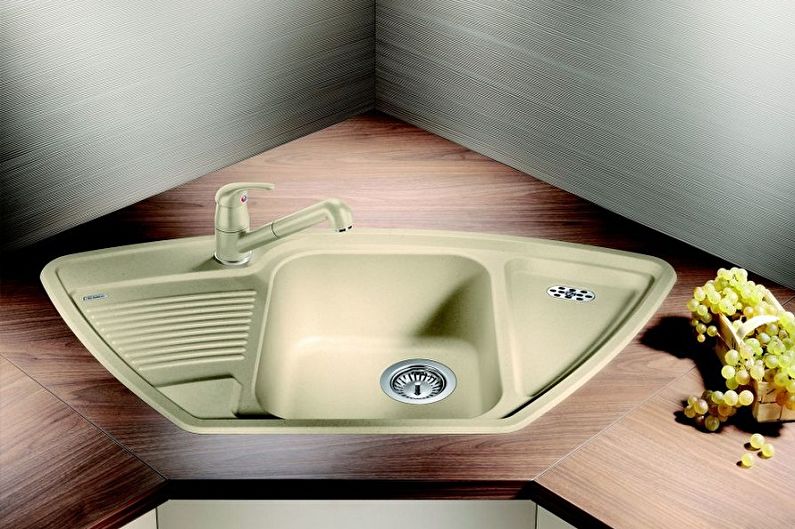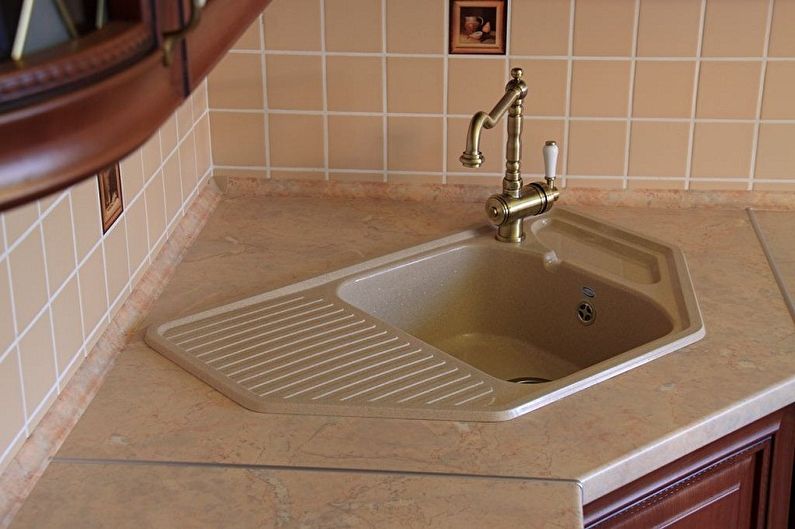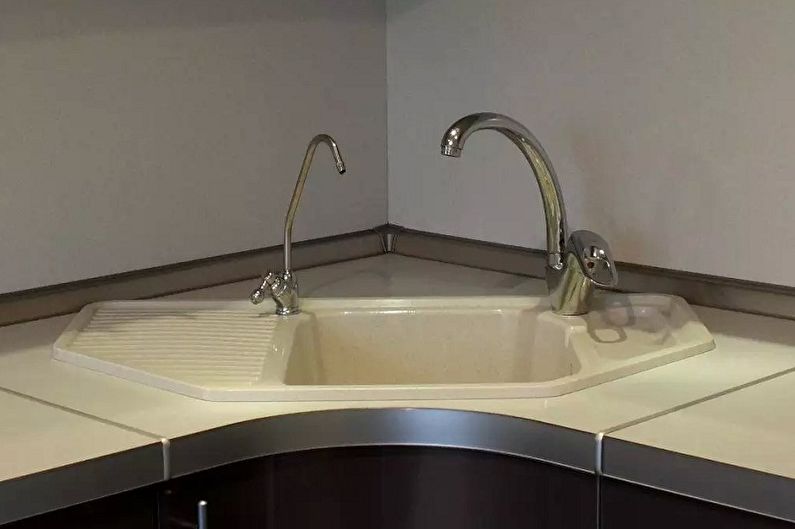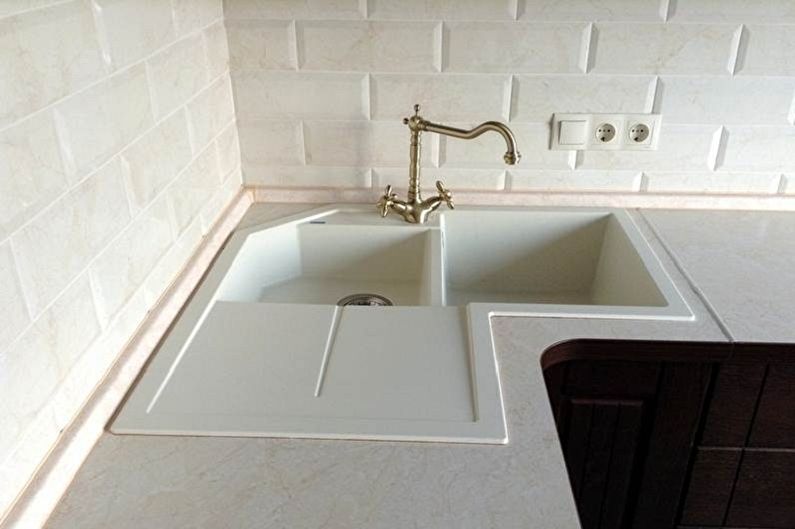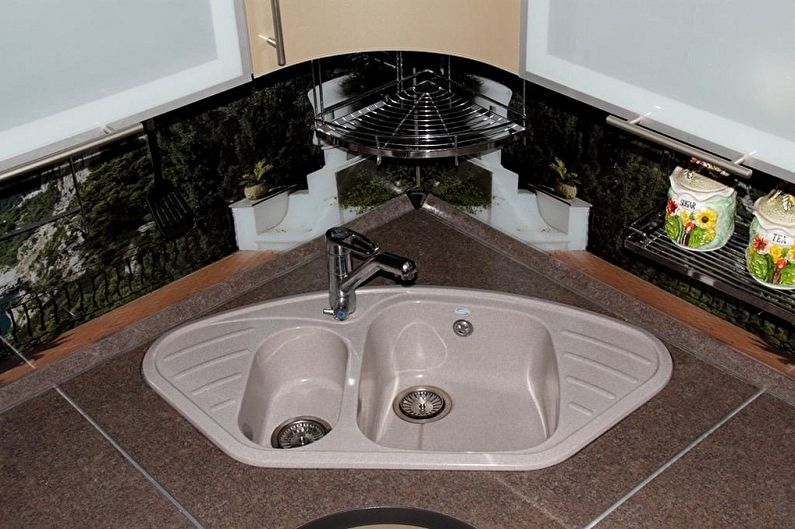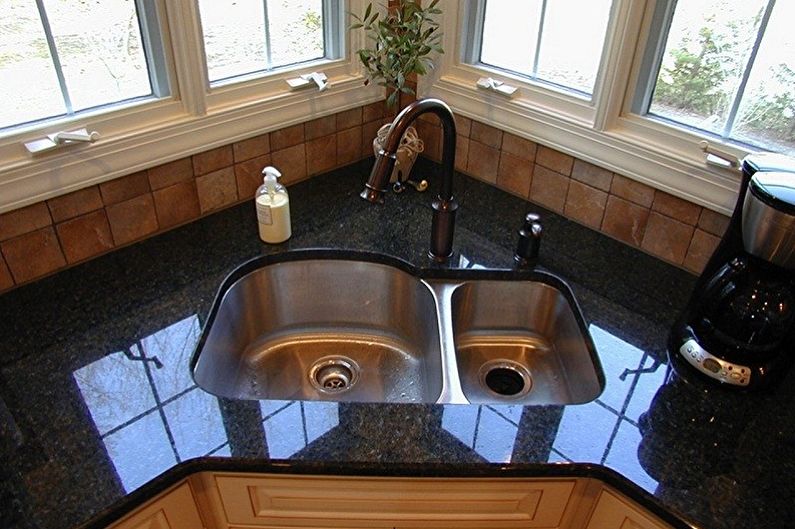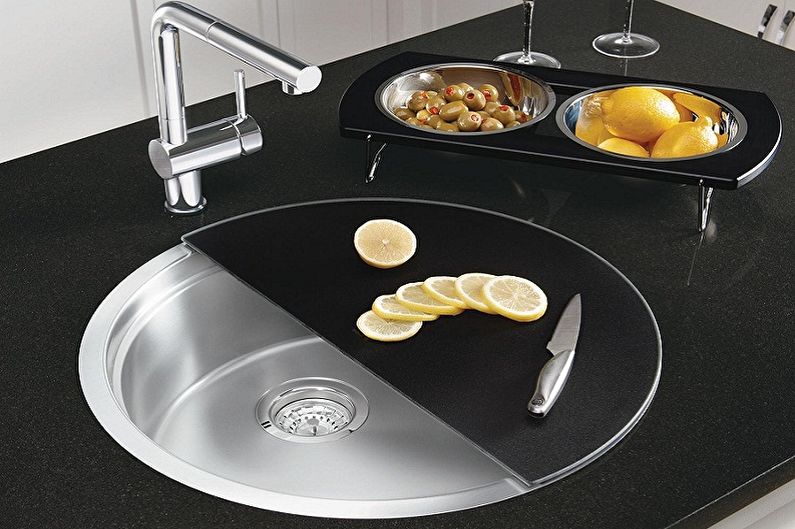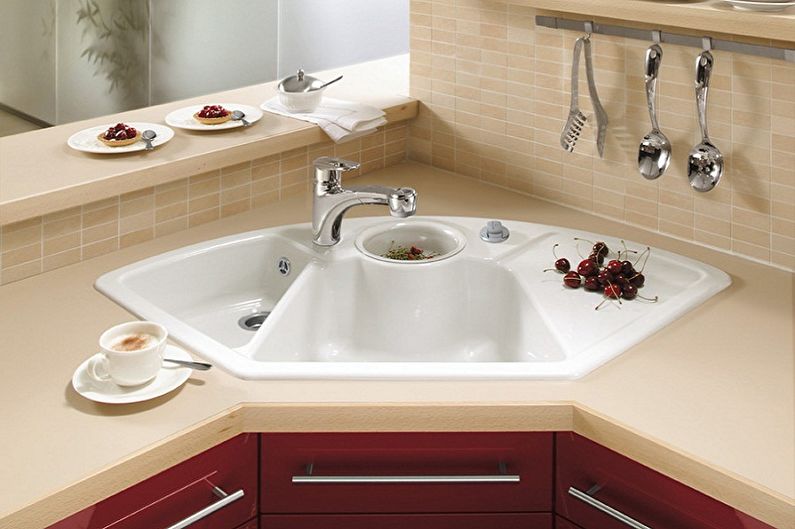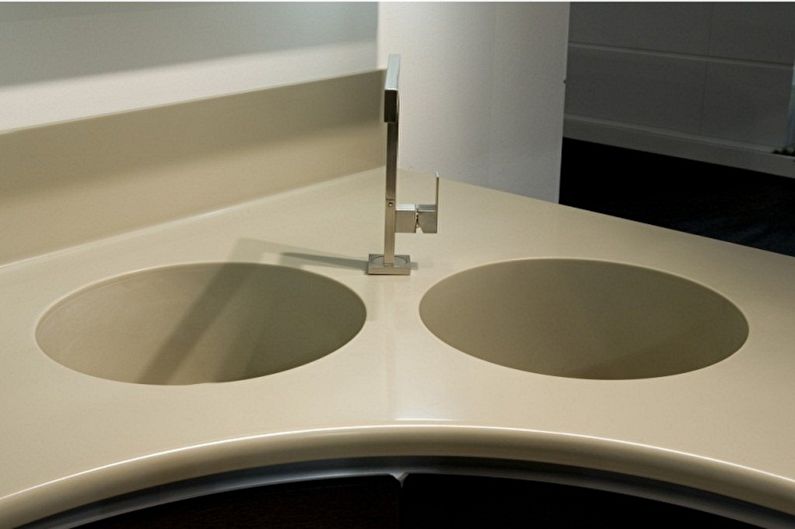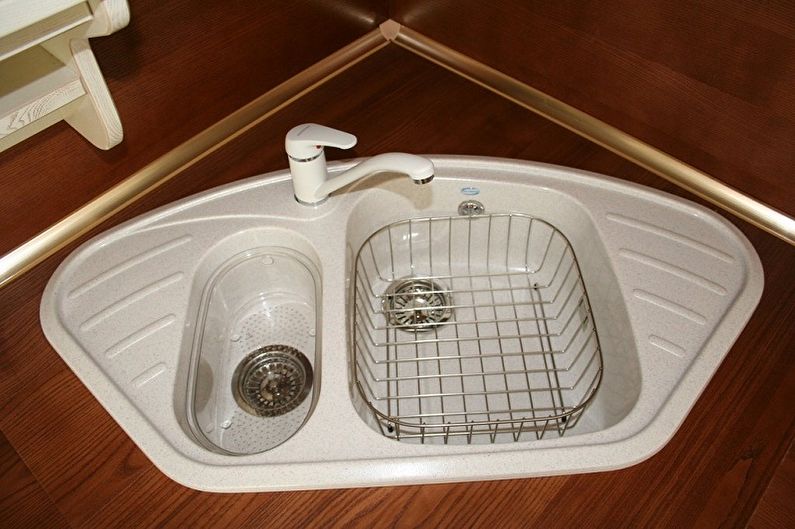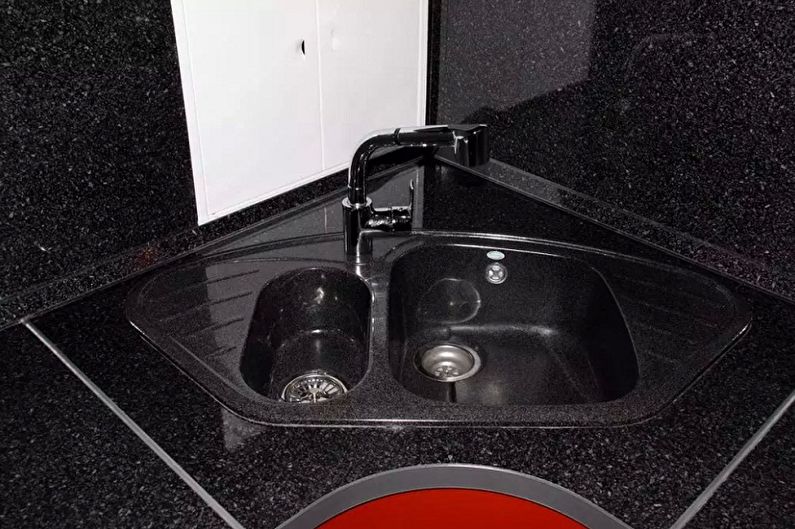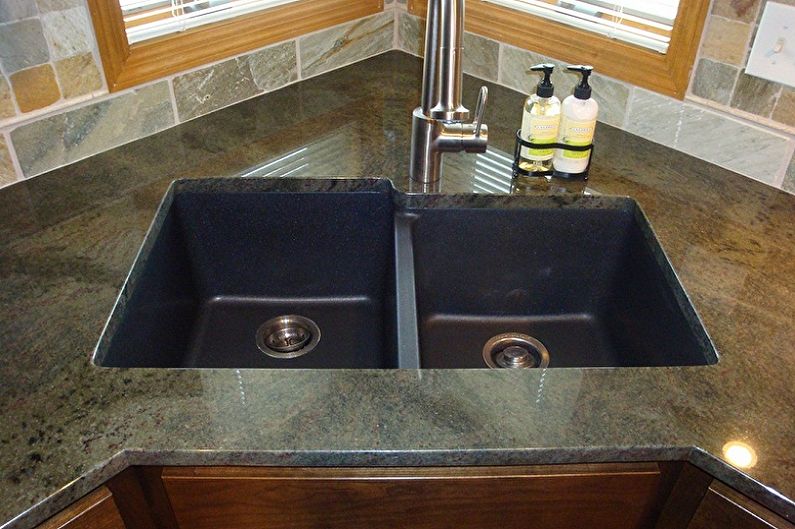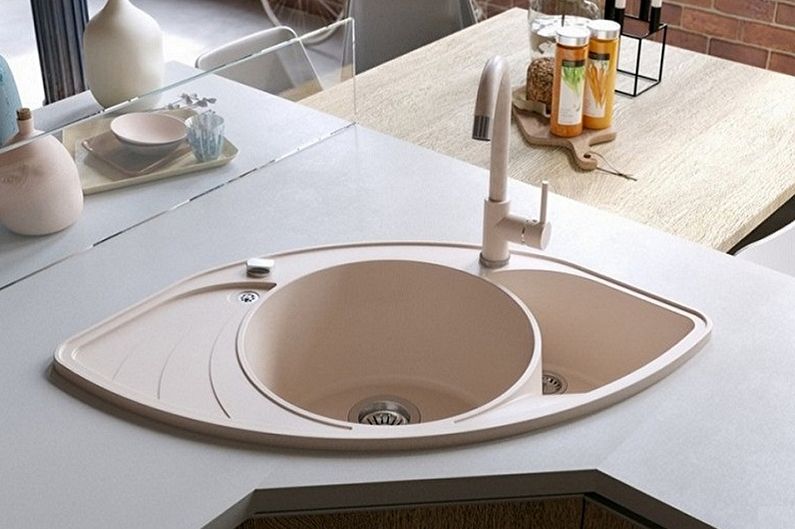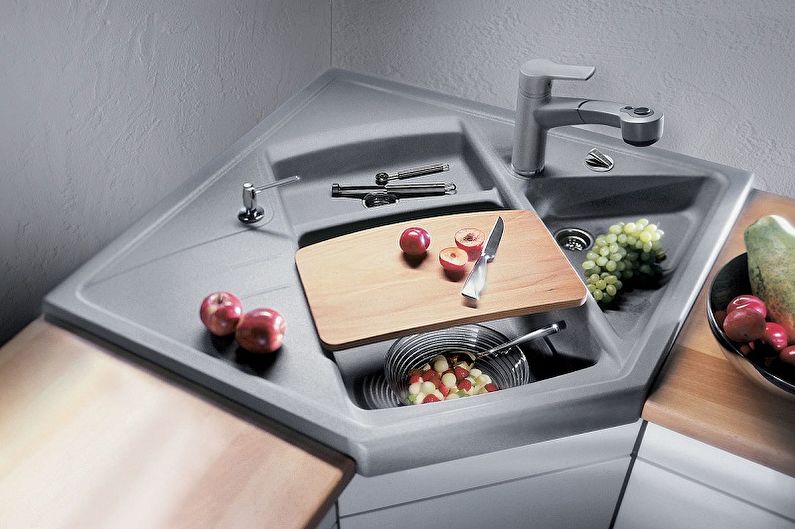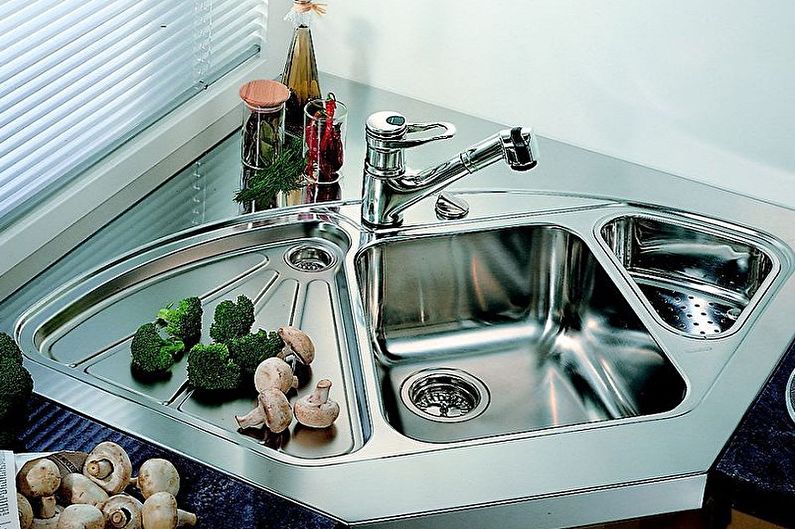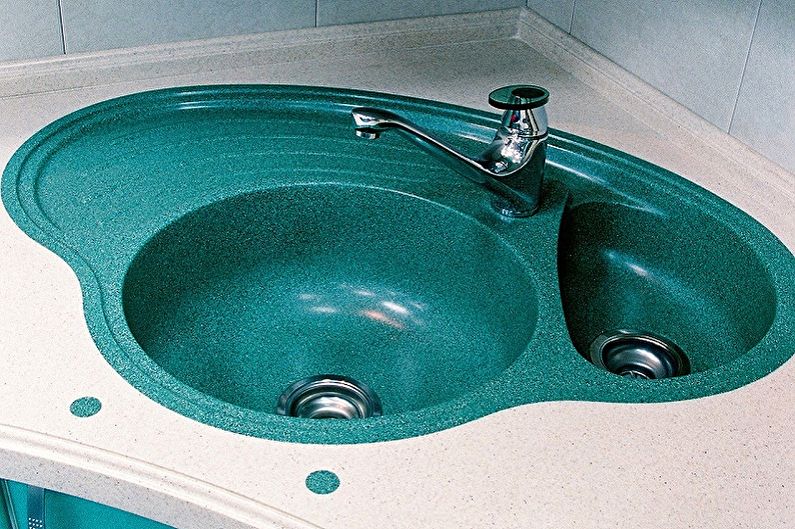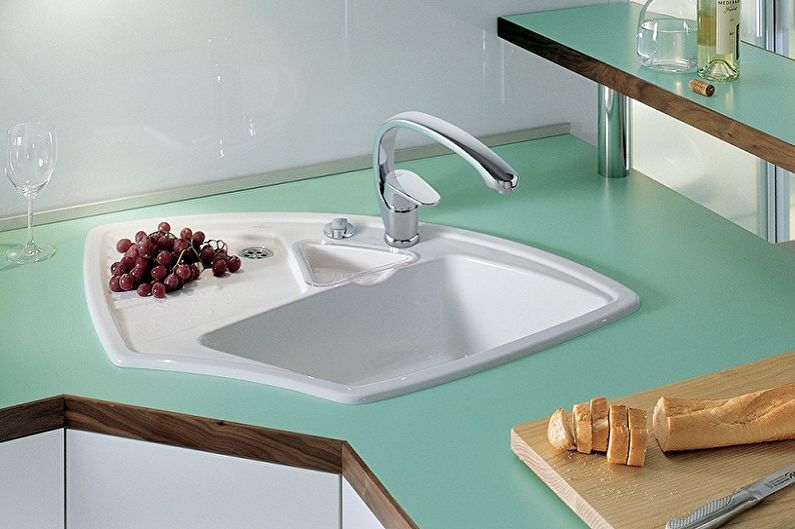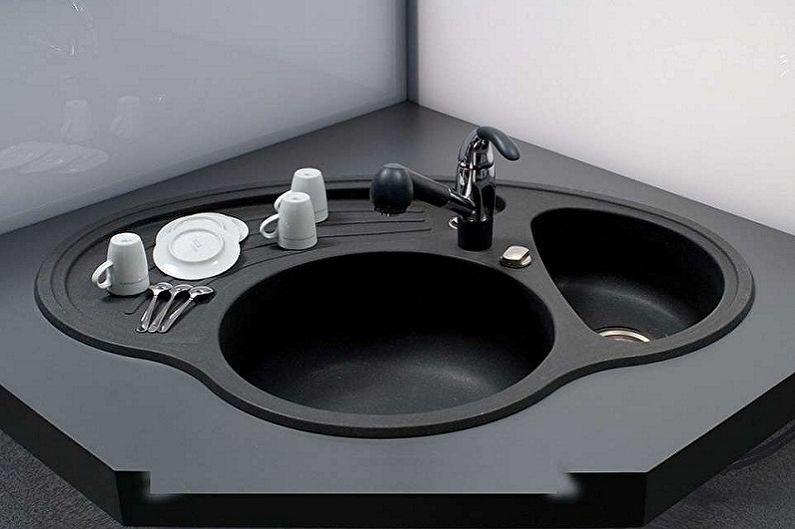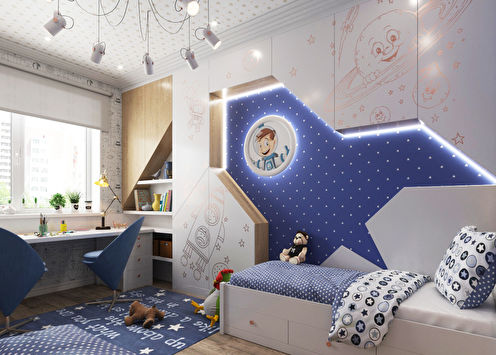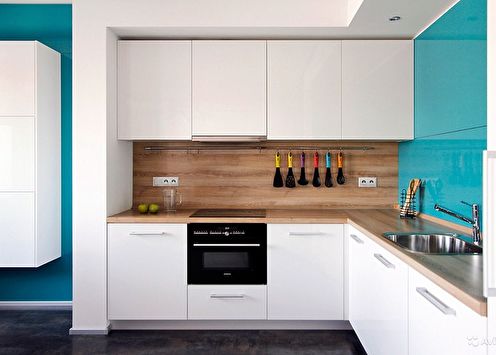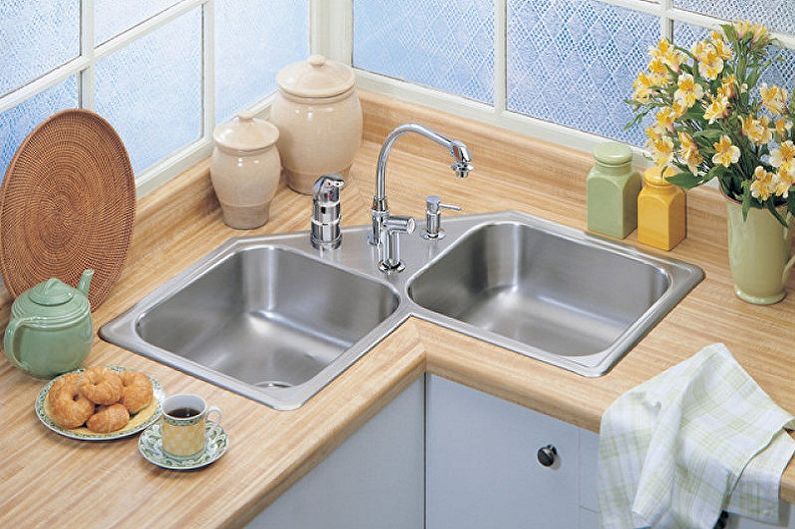
The layouts of most apartments, for unknown reasons, give the kitchen a rather small area, although it is here that the painstaking daily cooking processes take place, which require a full space. Often the owners are faced with the problem of placing all the necessary furniture and equipment, which is so difficult to fit on a small patch. In this case, the corner wash becomes a real salvation, using the space of the blind corner. Here it looks perfectly suited, tastefully selected, it can become a real “highlight” of the interior, because progress does not stand still, and the production of sanitary ware does not cease to amaze, improving such household items that we are familiar with.
Advantages and disadvantages of corner sinks
Of course, the main advantage of the corner sink is its appropriate location, which allows you to use the empty, as a rule, corner, thereby freeing up space for arranging other interior items. In addition to this indicator, other positive aspects testify in favor of this design, namely:
- Ease of use;
- The ability to place a sink with multiple chambers without losing the necessary area of the countertop;
- A spacious large space under the sink, which can accommodate not only bedside tables with dishes, but also other storage systems, for example, with electrical appliances or household accessories;
- Ability to place a deep corner pedestal above the sink;
- Installation of a corner sink with a countertop can be an excellent means of zoning the space in large kitchens or combined with living rooms;
- A wide variety of models that differ in size, workmanship, shapes, among which you can find the most unexpected design decisions.
As for the shortcomings, in this case they are practically absent. Perhaps spoiling the impression of operating a corner sink for the kitchen can, perhaps, only its improper installation, poor-quality sealing or the wrong choice of furniture for it.
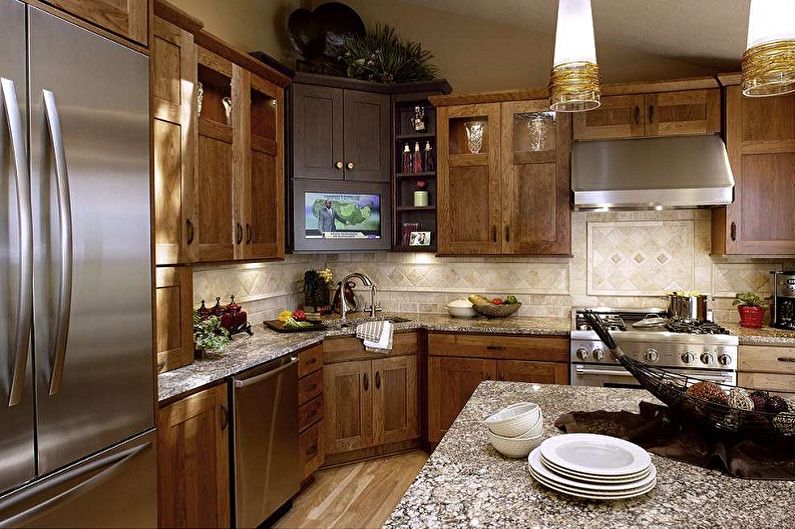
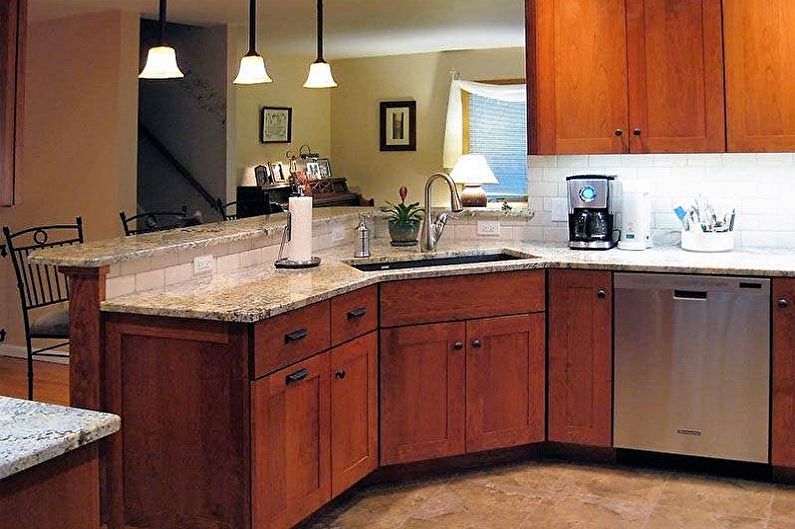
Types of corner sinks
Today's market provides a huge range of kitchen corner sinks, distinguished by their functionality, spaciousness, shapes and other indicators. This makes it possible to choose a successful option, which will not only satisfy with its practicality, but also emphasize the style of the interior, will become its successful addition.
Materials of manufacture
When choosing a sink, the raw material from which it is produced plays an important role. This applies not only to the durability of the product, but also to its compliance with the overall design of the kitchen. Let us consider in detail the advantages of modern materials for the manufacture of kitchen sinks:
1. Stainless steel. Stainless steel sinks owe their popularity to the high endurance of the material to household chemicals, as well as food acids. Stainless steel is not afraid of rust and temperature changes. At the same time, stainless steel sinks have a low cost, which determines a large consumer demand. Products have several types of coating: polishing, decoration and dullness, which makes it possible to choose the right model for a particular design. They perfectly "fit" into the modern directions of modern, hi-tech, loft, fusion. The disadvantage of the designs is increased noise during operation, however, this defect can be eliminated using modern insulation means.
2. Ceramics. Sinks made of this material have an excellent appearance and high noise insulation, but the heavy weight of the structures often causes difficulties in the installation process. They can be snow-white, colored, have drawings, while looking respectable and elegant and complementing any style direction. The ceramic surface is not afraid of temperature changes, scratches, exposure to household chemicals. The lower demand for ceramic sinks is also explained by their high cost, which can not be reached by an ordinary layman.
3. Porcelain tile. Sinks for kitchen made of granite can be called perhaps the most spectacular. Such material consists of granite chips and binders (polymers) and is able to withstand temperatures of more than 250 degrees. It has an absolutely smooth (even slippery) surface with a protective coating. Products come in the most unusual shapes, often representing designer collections. The color palette is diverse, and during operation it does not fade, does not lose its saturation. This is an excellent option for classic, avant-garde interiors, country kitchens, art nouveau.
4. Cast iron. The once very popular material is not often used to make corner sinks for the kitchen today. The reason for this is the uniformity of forms that do not differ in originality and functionality. Here one cannot meet multi-chamber structures or an unusual color, and the enamel, which covers the cast-iron surface, is unstable to mechanical stress. The advantage of the material is its undeniable strength, which ensures a long service life, and the coating can be restored from time to time. Cast-iron sinks perfectly fit into the styles of retro, vintage, Provence, bringing the spirit of antiquity to the interior.
In addition to using the materials we examined in the manufacture of sinks, you can also find combinations of them. For example, a duet of glass and metal, which is most relevant for modern interiors. At the same time, the bowl itself is metal, and ultra-strong tempered glass plays the role of a frame and a wing. During complex technological processes, glass acquires the necessary color and tempering, turning into a beautiful and reliable material.
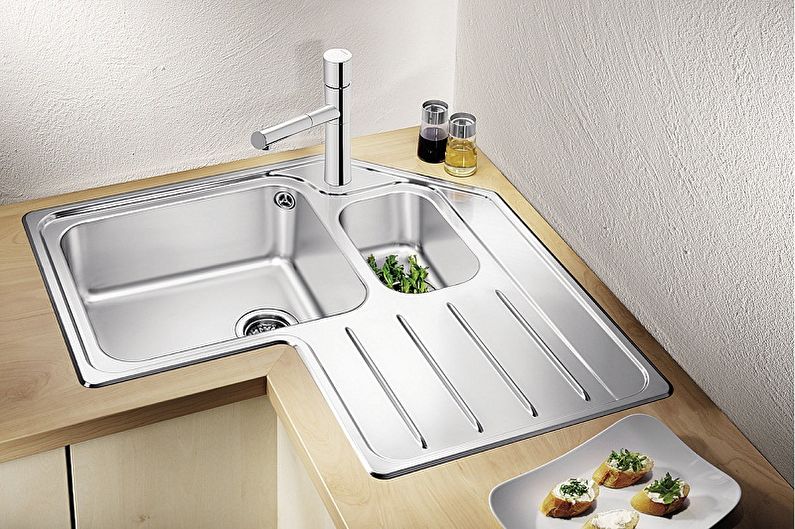
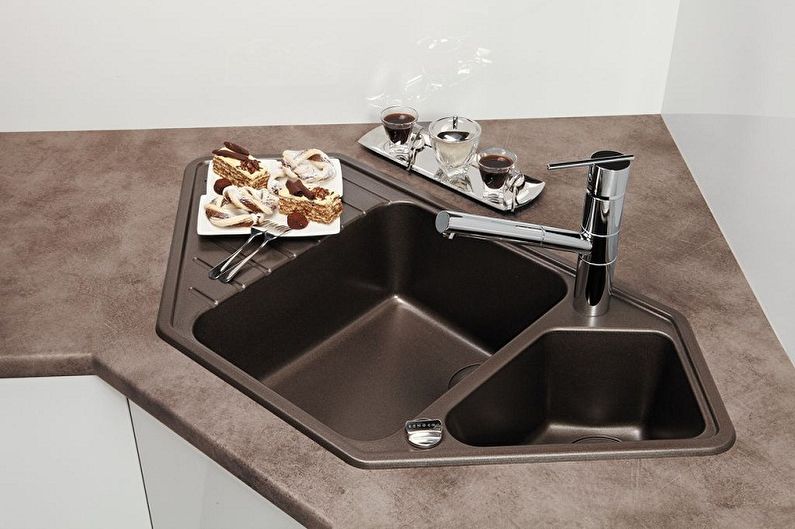
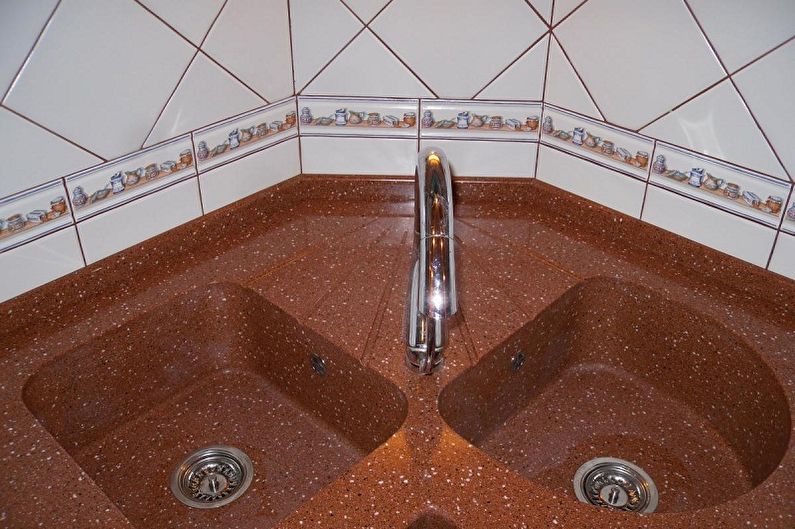
Mounting method
Modern corner sinks for the kitchen differ in installation methods, which should be considered when buying. There are two main types - overhead sinks and mortise, each of which has its own characteristics and advantages:
1. Overhead corner sink - a product that has sides and, when installed, “overlaps” completely on the surface of the corresponding cabinet. Often, such products are equipped with side “wings” on which washed dishes, vegetables and fruits are laid, etc. Such sinks are made more often from stainless steel and do not have a wide variety of models.
2. Mortise corner sink - the most modern option. It is mounted in a pre-cut nest in the canvas of the countertop. Moreover, the sink can be located at a different level relative to the countertop: to protrude a little, to be on a par or to drown deep (this design is also called the table top). Unions of identical surfaces of mortise sinks and granite countertops look very nice. The advantages of mortise structures can be called space saving, the ability to install in any kitchen and choose a model with a high degree of functionality. The installation of such products requires a particularly careful approach to arranging waterproofing, so this work is best left to professionals.
According to statistics, mortise designs are recognized as the most popular. This is explained not only by external aesthetics, but also by the opportunity to purchase a corner sink of any shape and model, which is easy to adapt to existing furniture.In contrast, overhead sinks, as a rule, are purchased complete with a curbstone, as they must correspond to its parameters.
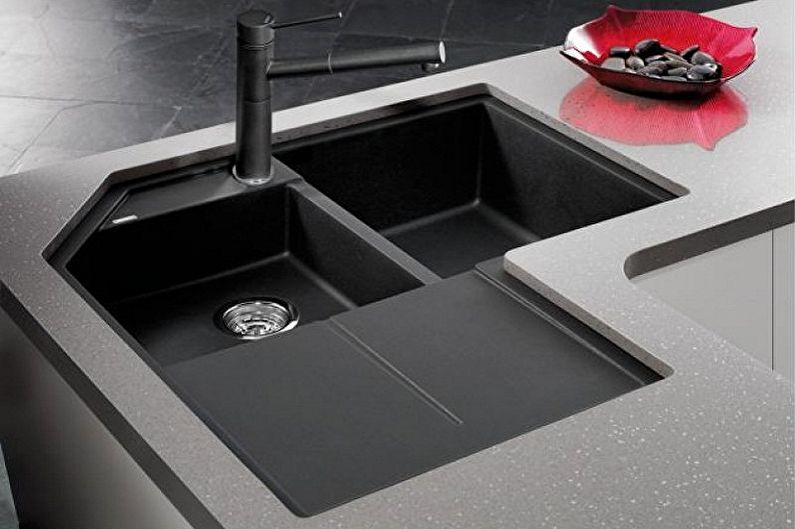
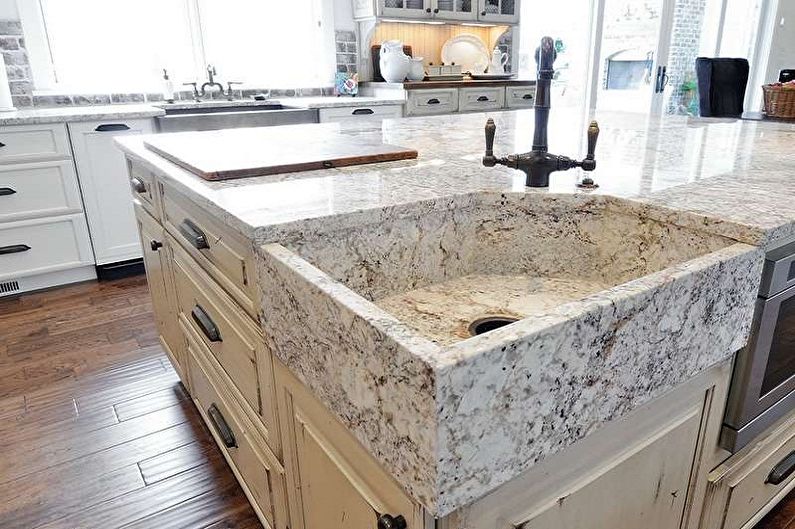
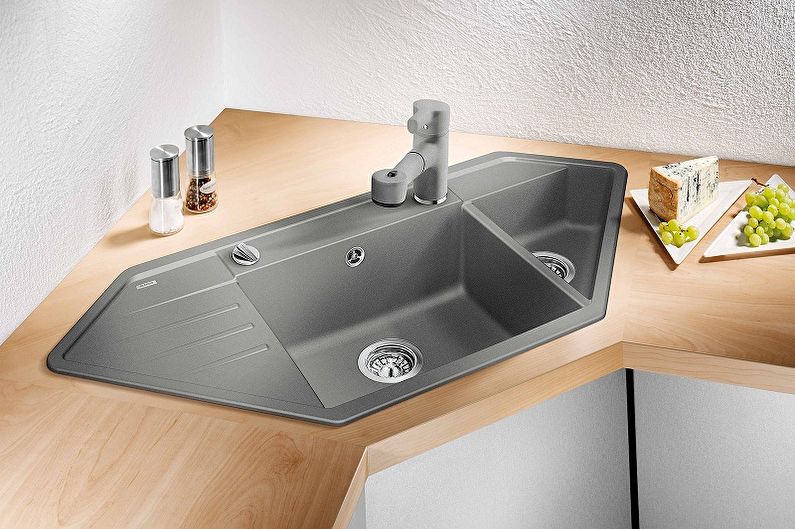
Sizes, shapes and functionality of sinks
In choosing a corner sink for the kitchen, you need the right approach to choosing the size and shape. A modern manufacturer offers a huge variety, including multifunctional designs with additional bowls and surfaces.
Dimensions and functionality
Dimensions of a corner kitchen sink depend on the availability of sufficient space, personal preferences of the owners, family size, and frequency of use of the product. If the room is quite small and the family is small, you can choose a compact version of the sink with one bowl, no frills.
As for large families, where there is a frequent need not only for cooking, but also for washing dirty dishes, it is more advisable to purchase a corner sink with large dimensions, preferably with several bowls, where you can place a large amount of dirty and clean dishes at the same time.
The depth of the bowl plays an important role - it must be such that water splashes do not fall on the surface of the countertop. The best option would be a sink with a depth of at least 20 cm. You must also take into account the distance from the sink to the edge of the countertop - it should be at least 5 cm so that accidental splashes do not fall on the floor.
Modern designs have great functionality. You can find models consisting of several bowls where you can not only wash dishes, but also defrost foods. Of particular interest is such an additional element as the sink lid, which at the same time serves as a cutting board. Some sinks include special compartments for sponges, detergents, and built-in lighting.
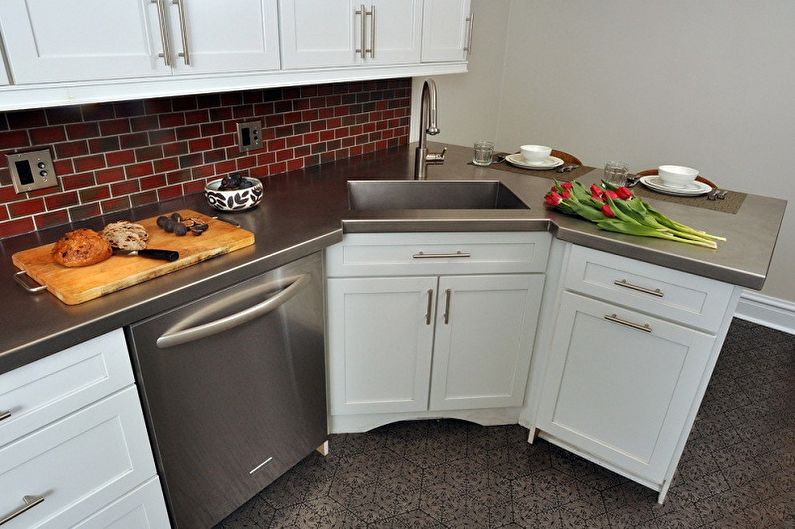
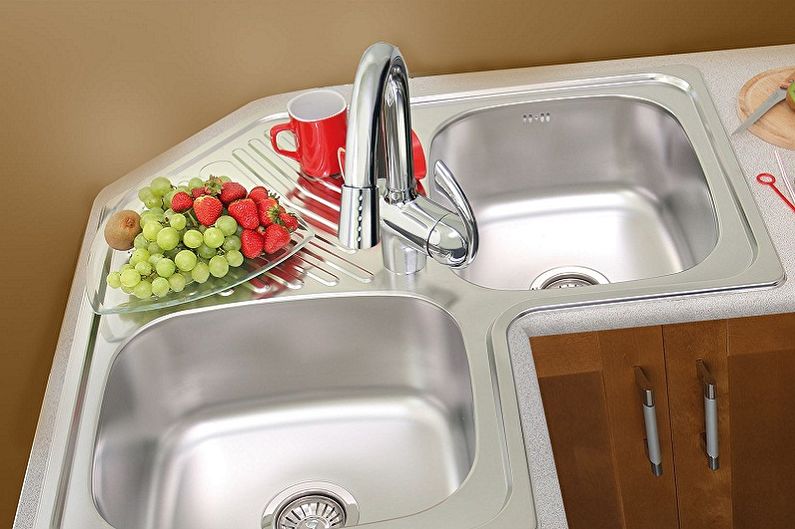
Shapes of corner sinks
As for the shapes, the classic rectangular and square sinks have held the leading position for many decades. Round constructions were at the peak of popularity for some time, however, as practice has shown, they are not convenient enough for washing large-sized dishes. Now on sale you can find trapezoidal sinks that are completely unusual for us, but if you like to surprise, this option will come in handy - they are no less spacious than rectangular ones, but they can significantly “revive” the routine of kitchen processes.
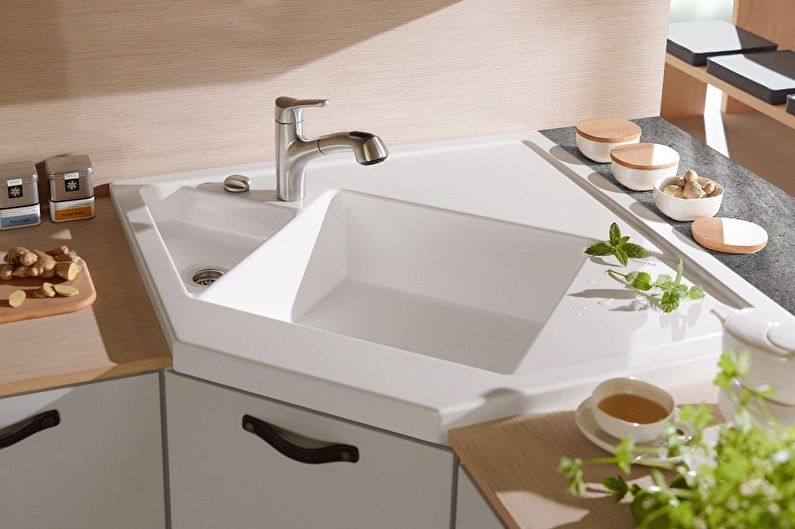
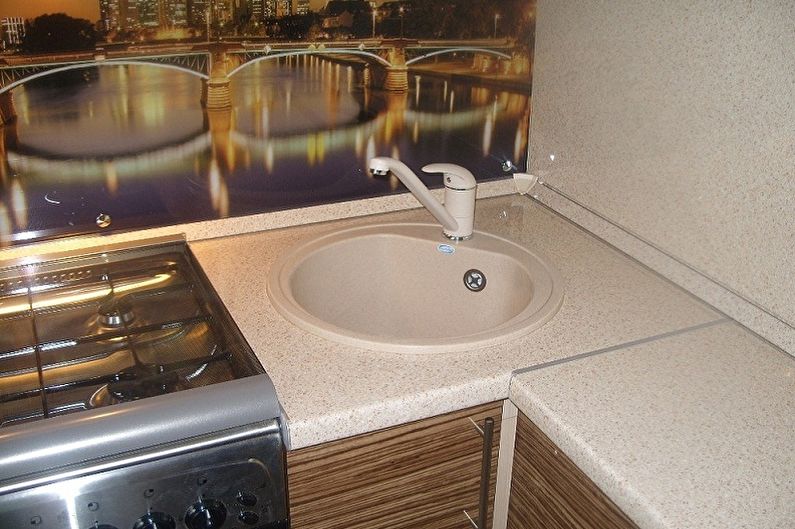
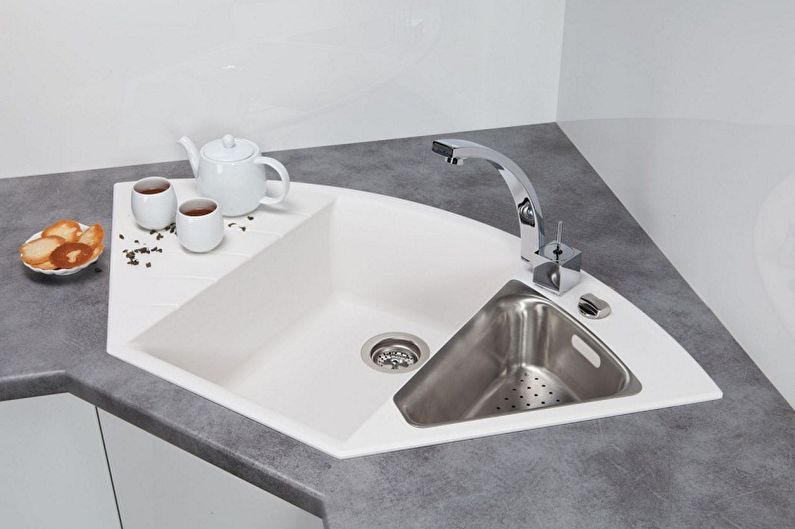
Corner sinks for the kitchen - photo
In the further gallery we offer you a more detailed look at today's range of corner sinks for kitchens. Here you will find many photos with various models, among which, perhaps, you will choose the best option for your own kitchen. Enjoy watching!
